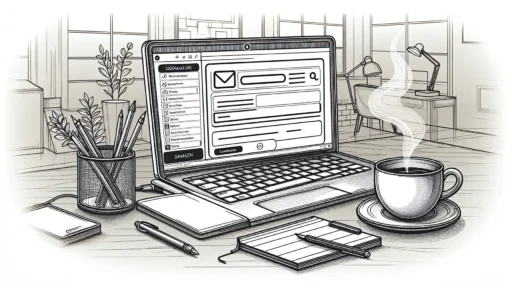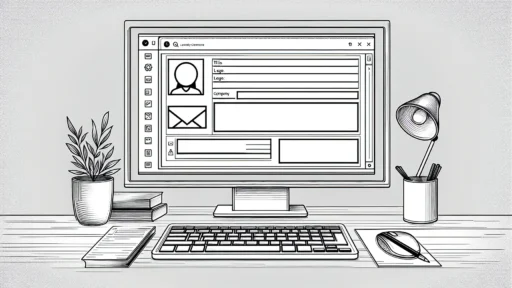Discussions between medical professionals and legal representatives can become imperative when legal issues arise. Granting permission for a doctor to speak with an attorney in a letter is a significant tool that can make such a discussion easier. Not only can such a letter grant an attorney access to crucial medical information, but it can also protect a patient’s privileges and rights.
Understanding how to write such a letter effectively can go a long way in court cases. It helps clarify the range of information that can be disclosed and establishes a working relationship between medical and legal professionals. In reading this article, one will learn about the most important factors to include in such a letter so that they seamlessly receive their medical and legal requirements.
Understanding the Importance of the Letter
The letter granting a doctor permission to speak with a lawyer is essential for smooth communication between healthcare providers and legal representatives. This document helps bridge the gap between medical and legal fields.
What Is the Letter?
The letter is a legal form that enables a doctor to speak with a patient’s attorney about a patient’s medical information. It describes what information can and cannot be disclosed and clarifies both parties’ roles in case of discrepancies. It safeguards patient confidentiality but enables communications when communications must occur.
Why You Need It
This letter is crucial for several reasons:
- Legal Compliance: It ensures compliance with privacy laws, such as HIPAA, which regulate the sharing of health information.
- Clear Communication: It establishes clear lines of communication between the healthcare provider and the legal team, helping them work together effectively.
- Access to Information: It allows lawyers access to vital medical records and insights, which may be critical in legal cases.
- Patient Rights: It protects patient rights, ensuring that the individual consents to information sharing.
- Timely Decisions: It aids in making timely legal decisions based on accurate medical data.
Incorporating the letter into legal processes streamlines interactions between these two vital parties, fostering a more coordinated approach to the patient’s needs.
Key Elements of the Letter
A well-crafted letter granting a doctor permission to speak with a lawyer includes essential components that ensure clarity and compliance. These elements promote effective communication between healthcare and legal professionals.
Essential Information to Include
- Patient Details: Include the patient’s full name, date of birth, and address for accurate identification.
- Doctor’s Information: Specify the doctor’s name, title, and contact details to establish a direct line of communication.
- Lawyer’s Information: Mention the lawyer’s name, firm, and contact information to facilitate discussions.
- Scope of Permission: Clearly state what medical information the doctor is allowed to share with the lawyer.
- Patient Signature: The patient’s signature must be included to validate the permission granted.
- Date: Indicate the date the letter is signed to maintain a record of when permission was granted.
Professional Tone and Language
Using proper and simple language strengthens the effectiveness of the letter. Adopt direct and respectful language, for instance, and shun complex and casual language such as slang. Adopt a formal manner of communicating to convey the gravity of requesting permission. Keeping direct and concise language ensures that both parties comprehend the granted permission and information shared, creating effective communication.
Drafting the Letter
Drafting a letter that grants a doctor permission to speak with a lawyer requires specific elements to ensure clarity and effectiveness. A systematic approach helps avoid confusion and ensures all relevant information is included.
Step-by-Step Guide
- Gather Patient Information: Include the patient’s full name, date of birth, and address. This information clearly identifies the individual involved.
- Include Doctor’s Information: Add the doctor’s name, title, and contact details. Confirming the doctor’s identity establishes trust and facilitates communication.
- List Lawyer’s Information: Write the lawyer’s name, firm, and contact information. This identifies who has the authority to receive information.
- Define the Scope of Permission: Clearly state what medical information the doctor can share. Specify any limitations or relevant details to avoid misunderstandings.
- Add Patient’s Signature: Include a space for the patient’s signature. This validates the document and reinforces consent.
- Date the Letter: Writing the date on which the letter was signed establishes its timeline and relevance.
- Use a Professional Tone: Maintain respectful and straightforward language throughout the letter. This fosters a productive relationship between the parties involved.
Common Mistakes to Avoid
- Omitting Key Information: Leaving out important details like full names or contact information can lead to confusion and delays.
- Lack of Clarity: Using vague terms about what information can be shared might result in miscommunication. Clear definitions are critical.
- Failing to Secure Consent: Not including the patient’s signature nullifies the permission granted in the letter. Always ensure consent is present.
- Ignoring the Date: Neglecting the date of the letter could create confusion about the validity of the permissions provided. Always date the document.
- Using Informal Language: Casual language can undermine the professionalism of the letter. Stick to precise and formal wording.
By adhering to these guidelines, the letter serves its purpose effectively, promoting better communication between healthcare and legal professionals.
Legal Considerations
Legal aspects play a critical role in the communication between healthcare providers and legal representatives. Understanding these factors ensures a smooth process in sharing medical information.
Confidentiality and Privacy Issues
Confidentiality and privacy must dominate when consent is received for a doctor to speak with an attorney. Medical information is covered by HIPAA, which safeguards patient medical information. What can and cannot be shared must be included in a letter in compliance with privacy laws. By defining its terms, it keeps information out of unapproved hands and keeps trust between doctor, patient, and attorney intact.
Implications of the Letter
The implications of such a letter are even more profound than simple permission. It leaves a record of consent, a legal necessity for processes. By committing to the black-and-white record of the patient’s agreement, such a letter helps adhere to legal protocols. It can even serve as a source of evidence for any contention regarding shared medical information. Realizing such implications keeps everyone in the loop and compliant.
Discover the Power of BlueNotary:
Integrate your Business, Title Company, or Law Firm to Satisfy your Customers and Decrease Turnaround
Get a document Notarized/Sign-up
Join the Free Notary Training Facebook Group
Conclusion
A letter granting permission for a doctor to converse with an attorney is a valuable tool for managing the intersection of medical and legal affairs. Not only can it simplify passing critical medical information, but it can also safeguard patient confidentiality and rights. By keeping a proper level of detail in a letter and a level of formality in language in mind, one can enable effective conversation between one’s medical and legal professionals.
This document is a legal consent form that ensures confidentiality and compliance with legislation. Patients can affirmatively simplify their medical and legal dealings by knowing about the most essential parts and legal factors involved. In the long run, such a letter ensures a coordinated system that effectively and efficiently addresses the patient’s requirements.
Frequently Asked Questions
What is the purpose of the letter granting a doctor permission to speak with a lawyer?
This letter facilitates effective communication between healthcare providers and legal representatives. It allows doctors to share critical medical information while protecting patient rights and privacy.
What key elements should be included in the permission letter?
Essential components include the patient’s full name, date of birth, address, the doctor’s and lawyer’s contact details, a clear scope of permission for medical information sharing, the patient’s signature, and the letter’s date.
Why is professionalism important when drafting this letter?
A professional tone and clear language enhance the letter’s effectiveness, ensuring all parties understand the permissions granted and the information shared, promoting better communication and collaboration.
How does this letter ensure compliance with privacy laws?
The letter must specify what medical information can be shared to comply with laws like HIPAA. This clarity helps protect patient confidentiality and ensures that all parties adhere to legal requirements.
What common mistakes should be avoided when drafting this letter?
Avoid omitting key information, failing to secure patient consent, lacking clarity in the scope of permission, neglecting to date the letter, and using informal language, as these can undermine the letter’s effectiveness and legal standing.
DISCLAIMER
This information is for general purposes only, not legal advice. Laws governing these matters may change quickly. BlueNotary cannot guarantee that all the information on this site is current or correct. For specific legal questions, consult a local licensed attorney.
Last updated: March 21, 2025













